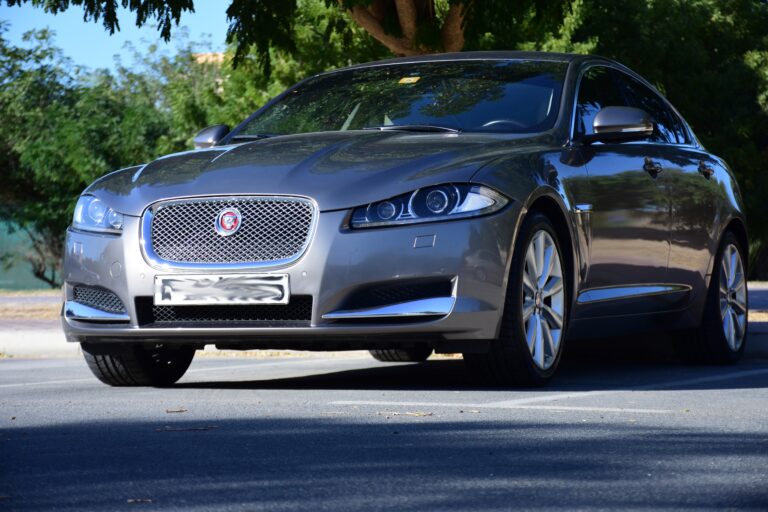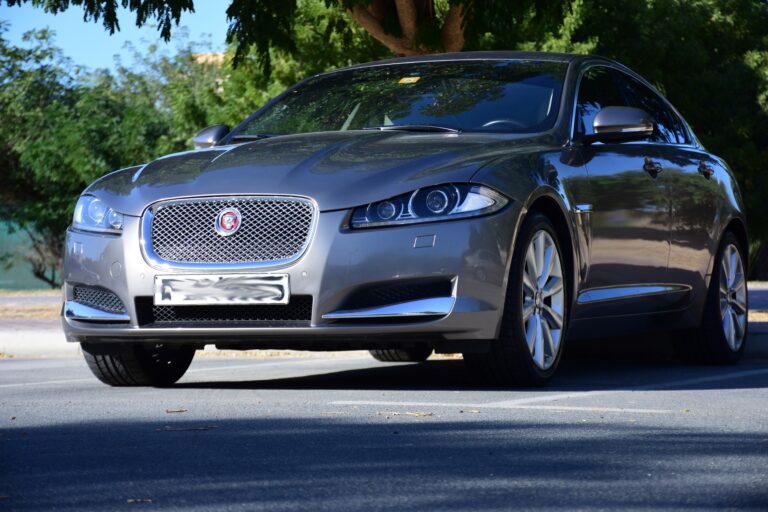Brand New Car Battery Not Charging: Unraveling the Mystery of a Dead Start
Brand New Car Battery Not Charging: Unraveling the Mystery of a Dead Start cars.truckstrend.com
There are few automotive frustrations quite as baffling and inconvenient as discovering your car won’t start, especially when you’ve just installed a brand new battery. The expectation is simple: new battery, reliable power. So, when a "brand new car battery not charging" scenario unfolds, it triggers a cascade of confusion and often, panic. Is the battery faulty? Is it something else entirely? This comprehensive guide aims to demystify this perplexing issue, offering a systematic approach to diagnosis, troubleshooting, and solutions, ensuring you get back on the road with confidence.
The Initial Shock: Why Would a New Battery Fail?
Brand New Car Battery Not Charging: Unraveling the Mystery of a Dead Start
The phrase "brand new" implies perfection, a clean slate, and immediate reliability. Therefore, the idea of a brand new car battery failing to hold a charge or even accepting a charge seems counterintuitive. However, it’s crucial to understand that "new" doesn’t automatically equate to "flawless" or "fully charged upon purchase." Several factors, both internal to the battery and external within the vehicle’s electrical system, can contribute to this frustrating problem. From manufacturing defects and improper storage leading to self-discharge, to overlooked pre-installation steps or underlying vehicle issues, pinpointing the exact cause is key to resolution.
Pre-Installation Checks: Did You Miss Something?
Before assuming the worst about your new battery or your car, it’s essential to rewind and consider the moments leading up to the installation. Sometimes, the problem stems from overlooked preliminary steps.
- Battery Type and Compatibility: Ensure the new battery matches your vehicle’s specifications. This includes the correct Group Size, Cold Cranking Amps (CCA), and Reserve Capacity (RC). An incompatible battery might not fit properly or deliver sufficient power.
- Visual Inspection: Before installation, thoroughly inspect the new battery for any signs of physical damage, such as cracks in the casing, bulging sides, or leaks around the terminals. Even minor damage during shipping or handling can compromise its integrity.
- Initial Voltage Check: A truly "new" battery should ideally have a resting voltage of 12.6 volts or higher. Many "new" batteries sold off the shelf may have sat in storage for a while and experienced some self-discharge. A voltage below 12.4V suggests it’s not at full charge. If it’s significantly lower, say below 12.0V, it might have been deeply discharged and potentially damaged before you even bought it.
- Pre-Installation Charging: This is perhaps the most overlooked step. While many assume a new battery is ready to go, it’s highly recommended to fully charge a new battery with a smart charger before installation. This ensures it starts its life cycle at peak capacity and helps "condition" it for optimal performance.

Common Culprits Beyond the Battery Itself (Vehicle-Related Issues)
If your pre-installation checks seem fine, the spotlight shifts to your vehicle’s electrical system. A brand new battery can only perform its job if the car’s charging system is functioning correctly.
- Alternator Malfunction: The alternator is your car’s power generator. It recharges the battery while the engine is running and powers the vehicle’s electrical components. If the alternator is faulty, it won’t send the necessary charge back to the new battery, causing it to drain or not charge effectively. Symptoms include a battery warning light on the dash, dimming headlights, or a whining noise.
- Loose or Corroded Battery Terminals/Cables: Even with a new battery, old, corroded, or loose battery terminals and cables can severely impede the flow of electricity. This prevents the alternator’s charge from reaching the battery or the battery’s power from reaching the starter. Always clean terminals thoroughly and ensure connections are tight.
- Faulty Ground Connection: The ground cable connects the battery to the car’s chassis or engine block, completing the electrical circuit. A loose, corroded, or damaged ground connection can prevent the battery from charging or discharging properly. This is an often-overlooked but critical point of failure.
- Parasitic Drain: This occurs when an electrical component in your car continues to draw power from the battery even when the ignition is off. Common culprits include faulty interior lights, glove compartment lights, trunk lights, aftermarket accessories, or even a malfunctioning computer module. Over time, even a small parasitic drain can completely deplete a brand new battery.
- Blown Fuses: Your car’s electrical system is protected by various fuses. A blown fuse in the charging circuit (e.g., a main fuse, alternator fuse, or even a fuse for a specific accessory) can disrupt the flow of power, preventing the battery from charging.
- Problem with the Battery Management System (BMS) / ECU: In newer, more technologically advanced vehicles, a sophisticated Battery Management System (BMS) or the Engine Control Unit (ECU) monitors and controls battery charging. A glitch or fault in these systems can lead to improper charging or no charging at all, even with a perfectly good battery and alternator.


Diagnosing the Problem: A Step-by-Step Guide
To systematically identify the root cause of a brand new battery not charging, you’ll need a few basic tools and a logical approach.
Tools Needed:
- Digital Multimeter
- Battery Charger (smart charger preferred)
- Battery Terminal Brush/Cleaner
- Wrench (for terminals)
- Safety Glasses and Gloves
Safety First: Always wear safety glasses and gloves when working with car batteries. Disconnect the negative terminal first, and reconnect it last.
-
Check Battery Voltage (Engine Off):
- With the car off and the battery fully disconnected from the vehicle for at least an hour (to allow surface charge to dissipate), measure the voltage across the battery terminals using your multimeter.
- Readings:
- 12.6V or higher: Battery is fully charged.
- 12.4V – 12.5V: Battery is 75% charged.
- 12.2V – 12.3V: Battery is 50% charged.
- Below 12.0V: Battery is deeply discharged and potentially damaged.
- Action: If low, try charging it with an external charger. If it doesn’t hold a charge after charging, the battery itself might be faulty.
-
Check Battery Voltage (Engine Running):
- Start the car (if possible). With the engine idling, measure the voltage across the battery terminals.
- Readings:
- 13.5V – 14.7V: This indicates the alternator is likely functioning correctly and charging the battery.
- Below 13.0V or fluctuating wildly: Suggests a problem with the alternator or the charging circuit.
- Action: If the voltage is too low, proceed to inspect the alternator.
-
Inspect Cables and Terminals:
- Visually inspect both positive and negative battery cables and their terminals for corrosion, fraying, or damage.
- Clean any corrosion using a battery terminal brush and a baking soda/water solution.
- Ensure all connections (battery to cable, cable to starter, cable to engine block/chassis) are clean and tightly secured.
-
Load Test the Battery:
- If the battery voltage looks good but the car still won’t start, the battery might lack sufficient cranking amps. Most auto parts stores offer free battery load testing. A load test simulates starting the car and checks the battery’s ability to deliver current under stress.
-
Check for Parasitic Drain:
- Method 1 (Multimeter):
- Disconnect the negative battery terminal.
- Set your multimeter to measure Amps (mA or A).
- Connect the positive lead of the multimeter to the negative battery post and the negative lead of the multimeter to the disconnected negative battery cable.
- The reading should ideally be below 50mA (0.05 Amps). A higher reading indicates a parasitic drain.
- To find the source, pull one fuse at a time while watching the multimeter. When the amperage drops significantly, you’ve found the circuit with the drain.
- Method 2 (Test Light): Similar principle, but less precise.
- Method 1 (Multimeter):
-
Inspect Alternator Belt and Connections:
- Ensure the serpentine belt driving the alternator is tight and not slipping.
- Check all electrical connections to the alternator for looseness or corrosion.
-
Check Relevant Fuses:
- Consult your car’s owner’s manual to locate the main fuse box and any specific fuses related to the charging system (e.g., "ALT" or "BATT" fuses). Inspect them for continuity.
Solutions and Next Steps
Once you’ve identified the problem, the solution becomes clear:
- Battery Replacement (Warranty): If, after thorough testing, the new battery itself is confirmed to be defective (e.g., won’t hold a charge, fails a load test), return it under warranty. Most new batteries come with a warranty period.
- Alternator Replacement/Repair: If your multimeter tests confirm a faulty alternator, it will need to be replaced or repaired. This is often a job best left to a professional mechanic unless you have significant automotive experience.
- Cleaning/Replacing Cables: If corrosion or damage is found on battery cables or terminals, clean them thoroughly. If severely damaged, replace them.
- Fixing Parasitic Drains: Once you’ve isolated the circuit with the drain, you’ll need to investigate the components on that circuit (e.g., an aftermarket stereo, a faulty relay, a shorted wire) and repair or replace the offending part.
- Professional Diagnosis: If you’ve gone through these steps and still can’t pinpoint the issue, or if the problem involves complex electrical systems (like the BMS), it’s time to consult a qualified automotive mechanic. They have specialized diagnostic tools and expertise to tackle intricate electrical problems.
Preventing Future Issues
To avoid repeating the "brand new car battery not charging" nightmare:
- Regular Battery Maintenance: Keep terminals clean and check connections periodically.
- Periodic Charging System Checks: Have your charging system (alternator, battery) tested during routine maintenance.
- Use a Trickle Charger for Long Storage: If your car sits unused for extended periods, a smart trickle charger can maintain the battery’s charge and prolong its life.
- Buy from Reputable Sources: Purchase batteries from trusted retailers with good stock rotation to minimize the chance of getting a battery that has sat on a shelf for too long.
- Fully Charge New Batteries: Always give a new battery a full charge with a quality smart charger before installing it.
Potential Costs Associated with Diagnosing and Fixing a Non-Charging New Battery Issue
The cost associated with a brand new car battery not charging can vary widely depending on the root cause and whether you perform the work yourself or hire a professional. Here’s a general overview:
| Component/Service | Estimated Cost (DIY Parts) | Estimated Cost (Professional Repair) | Notes |
|---|---|---|---|
| New Battery (if faulty) | $120 – $300 | N/A (usually covered by warranty) | If the battery itself is defective, it should be replaced under warranty, so the direct cost to you is minimal unless you’re outside the warranty period or the battery was abused. |
| Alternator (New/Remanufactured) | $150 – $400 | $400 – $800+ | Price varies significantly by vehicle make/model and whether you opt for a new or remanufactured unit. Labor for professional installation adds significantly. |
| Battery Terminal Cleaner/Brush | $5 – $15 | Included in service | Essential for maintenance and diagnosis. |
| Multimeter | $20 – $60 | N/A | A crucial diagnostic tool for DIYers. |
| Battery Charger (Smart Charger) | $40 – $100+ | N/A | Highly recommended for maintaining battery health and pre-charging new batteries. |
| Battery Cables/Terminals | $20 – $80 | $50 – $150 | Depending on whether only terminals or full cables need replacement. |
| Fuse Replacement | $5 – $20 | Included in diagnosis | Fuses are inexpensive, but finding the blown fuse can take time. |
| Parasitic Drain Diagnosis/Repair | $0 (DIY time) | $100 – $300+ | Labor-intensive if a mechanic has to track down the source of the drain, as it involves systematic testing of circuits. Cost depends on complexity and the fix required. |
| Mechanic Labor Rate (per hour) | N/A | $80 – $150+ | This is a significant factor for professional repairs. Diagnostic fees can range from $50-$150. |
Note: These are estimated costs and can vary based on location, vehicle type, brand of parts, and specific repair shop rates.
Frequently Asked Questions (FAQ)
Q: Can a brand new battery be dead or faulty?
A: Yes, absolutely. While less common, new batteries can be dead out of the box due to manufacturing defects, prolonged storage leading to deep discharge before sale, or damage during shipping. Always check the voltage and consider a pre-installation charge.
Q: How do I know if my alternator is bad?
A: Common signs include a battery warning light on your dashboard, dimming headlights or interior lights, a burning rubber smell (from a slipping belt), or a whining sound. The most definitive test is measuring the voltage across the battery terminals with the engine running; it should be between 13.5V and 14.7V.
Q: What is a parasitic drain, and how do I fix it?
A: A parasitic drain is an electrical component that continues to draw power from the battery even when the car is off. You can test for it using a multimeter in series with the battery cable. Once identified, you’ll need to pinpoint the specific circuit or component causing the drain (often by pulling fuses one by one) and then repair or replace the faulty part.
Q: Should I charge a new car battery before installing it?
A: Yes, it’s highly recommended. While many new batteries come partially charged, a full charge ensures the battery starts its life at peak capacity, which can prolong its overall lifespan and performance. Use a smart charger for optimal results.
Q: When should I take my car to a mechanic for this issue?
A: If you’ve performed the basic diagnostic steps (voltage checks, terminal inspection, fuse checks) and can’t identify the source of the problem, or if the issue seems to involve complex electrical systems (like the Battery Management System), it’s best to consult a professional mechanic. They have specialized tools and expertise to diagnose and repair intricate electrical faults.
Conclusion
A brand new car battery not charging is a frustrating problem, but it’s rarely an unsolvable one. By approaching the issue systematically, checking both the battery itself and the vehicle’s electrical charging system, you can effectively diagnose the root cause. Remember that a new battery is only as good as the system it’s connected to. With a bit of patience, the right tools, and the knowledge provided in this guide, you can confidently troubleshoot and resolve this common automotive headache, restoring your vehicle’s reliability and your peace of mind.






